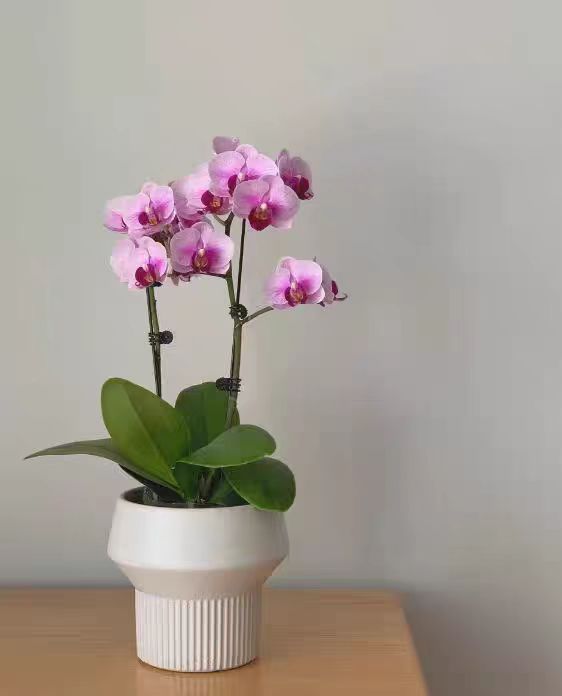When purchasing or caring for a Phalaenopsis, it is crucial to know its age and seedling age. This not only helps to assess the growth status and flowering potential of the plant but also provides a basis for subsequent maintenance and management. So, how exactly can we judge the age and seedling age of a Phalaenopsis?
From the overall morphology of the plant, the number of leaves of a Phalaenopsis is an important basis for judging its age and seedling age. Generally speaking, when a Phalaenopsis starts growing from a seedling, the first year is mainly the growth stage of the roots and leaves. For a one-year-old Phalaenopsis seedling, the number of leaves is usually around 2 to 3. At this time, the plant is relatively short, the leaves are more tender, the color is lighter, and the texture is soft. As the number of growing years increases, in the second year, the number of leaves of the Phalaenopsis will increase to 4 to 5. The height of the plant increases, the leaves gradually become wider and thicker, the color becomes darker green, and the gloss is enhanced. When the Phalaenopsis has been growing for more than three years, the number of leaves may reach 6 or more, the plant is more robust, and the stem is thicker.
In addition to the number of leaves, the state of the roots is also a key factor in judging the age and seedling age of a Phalaenopsis. For a young Phalaenopsis seedling, the number of roots is relatively small, the roots are thin and weak, white in color, soft in texture, and the new roots germinate relatively slowly. As the age increases, the roots of the Phalaenopsis will continue to increase in number and thickness. The color of the old roots will gradually turn light yellow or even dark brown, and some aerial roots may appear on the surface of the roots. Generally speaking, for a Phalaenopsis seedling that is more than two years old, the roots will be relatively well-developed and densely distributed in the flower pot, firmly grasping the substrate, which also indicates that the plant has adapted to the growth environment and has a strong ability to absorb nutrients and water.
Observing the flowering situation of a Phalaenopsis can also help us determine its age. Usually, a Phalaenopsis needs to grow to a certain stage before it has the ability to flower. In most cases, a Phalaenopsis seedling that is more than three years old will flower normally. For one-year-old and two-year-old Phalaenopsis seedlings, because their growth and development are not yet mature, it is difficult for them to flower. Even if there is an occasional flowering phenomenon, the number of flowers is relatively small, the diameter of the flowers is small, and the flower color is not very bright. For an adult Phalaenopsis that is more than three years old, once it enters the flowering period, it can usually produce a strong flower spike. There are more flower buds on the flower spike, and the flowers that bloom are large, plump, with a bright color, and have high ornamental value.
In addition, we can also infer the age and seedling age of a Phalaenopsis by observing its growth rate. Under the same maintenance conditions, the growth rate of a young Phalaenopsis seedling is relatively slow, and it takes a long time for new leaves to grow and the roots to develop. As the age increases, the plant gradually enters a vigorous growth period, and the growth rate will significantly accelerate, whether it is the growth of the leaves or the emergence of the flower spike.
By comprehensively observing multiple aspects such as the number of leaves, the state of the roots, the flowering situation, and the growth rate of the Phalaenopsis, we can more accurately judge the age and seedling age of the Phalaenopsis, thus providing a powerful reference for scientific maintenance and reasonable management.
How can we determine the age of a Phalaenopsis?

Share with
Tagged in :




Leave a Reply